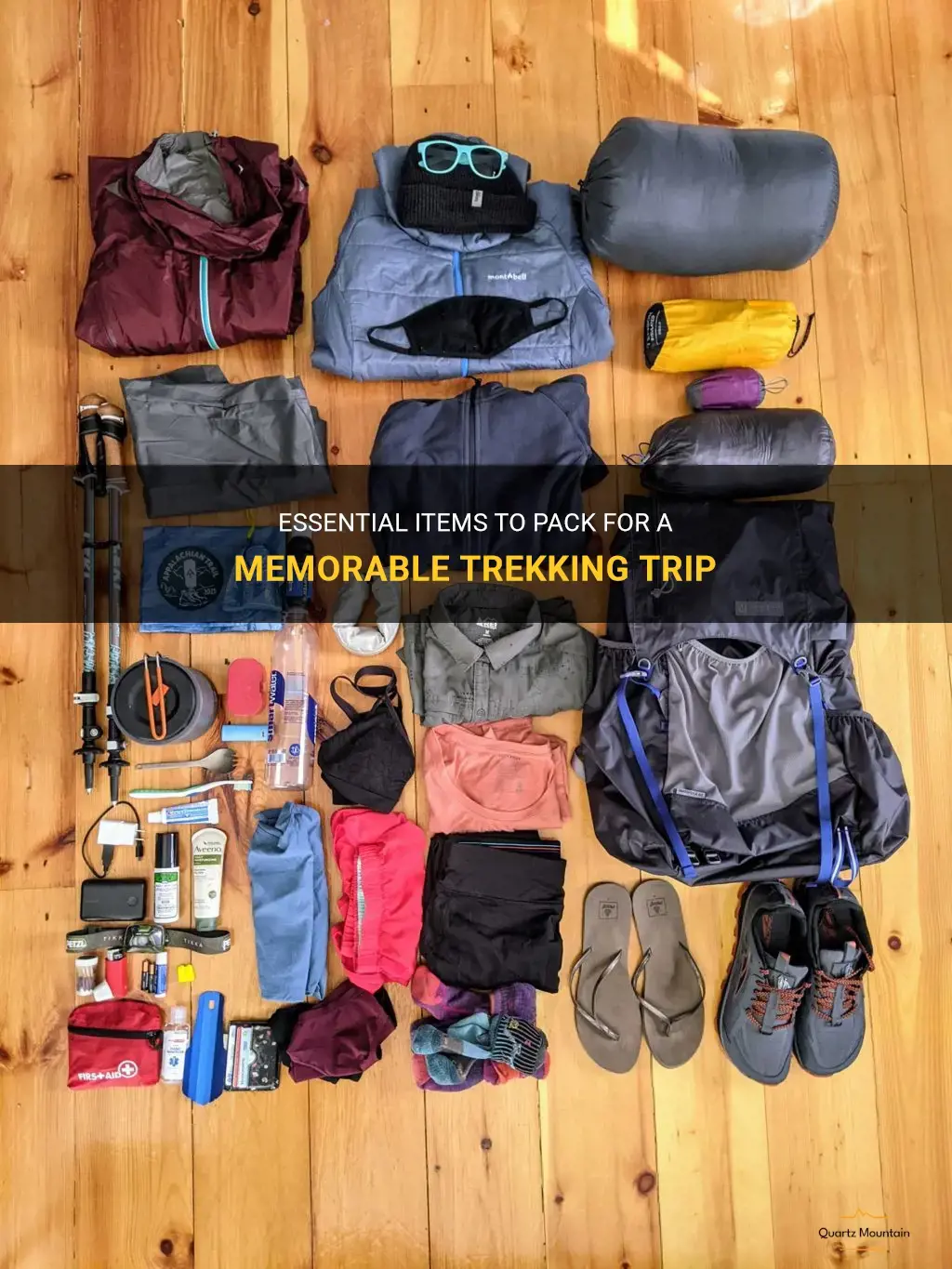
Are you a hiking enthusiast planning your next memorable trekking trip? Packing the right essentials can make all the difference between a blissful adventure and a challenging one. From comfortable footwear to navigation tools and first aid kits, there are several essential items you should never leave behind when embarking on a trekking trip. In this article, we will discuss some of the must-have items that will ensure your trek is not only safe but also unforgettable. So grab your backpack, lace up your boots, and get ready for an unforgettable journey through breathtaking landscapes!
| Characteristics | Values |
|---|---|
| Clothing | Comfortable, Layered |
| Footwear | Sturdy, Waterproof |
| Backpack | Lightweight, Durable |
| Sleeping Bag | Warm, Compact |
| Tent | Lightweight, Easy to set up |
| Food | Lightweight, High in energy |
| Water | Portable, Purification method |
| First Aid Kit | Essential supplies, Medications |
| Navigation | Map, Compass, GPS |
| Cooking Equipment | Stove, Utensils |
| Personal Hygiene Items | Toilet paper, Soap |
| Lighting | Headlamp, Flashlight |
| Communication | Cell phone, Radio |
| Emergency Equipment | Whistle, Flare |
| Miscellaneous Items | Cash, Swiss army knife |
What You'll Learn
- What are the essential items to pack for a trekking trip?
- How should I pack my backpack for a trekking trip to ensure maximum comfort and convenience?
- What kind of clothing and footwear is appropriate for a trekking trip?
- What type of gear or equipment should I bring for a trekking trip?
- Are there any specific items or tips you recommend for trekking in different climates or terrains?

What are the essential items to pack for a trekking trip?
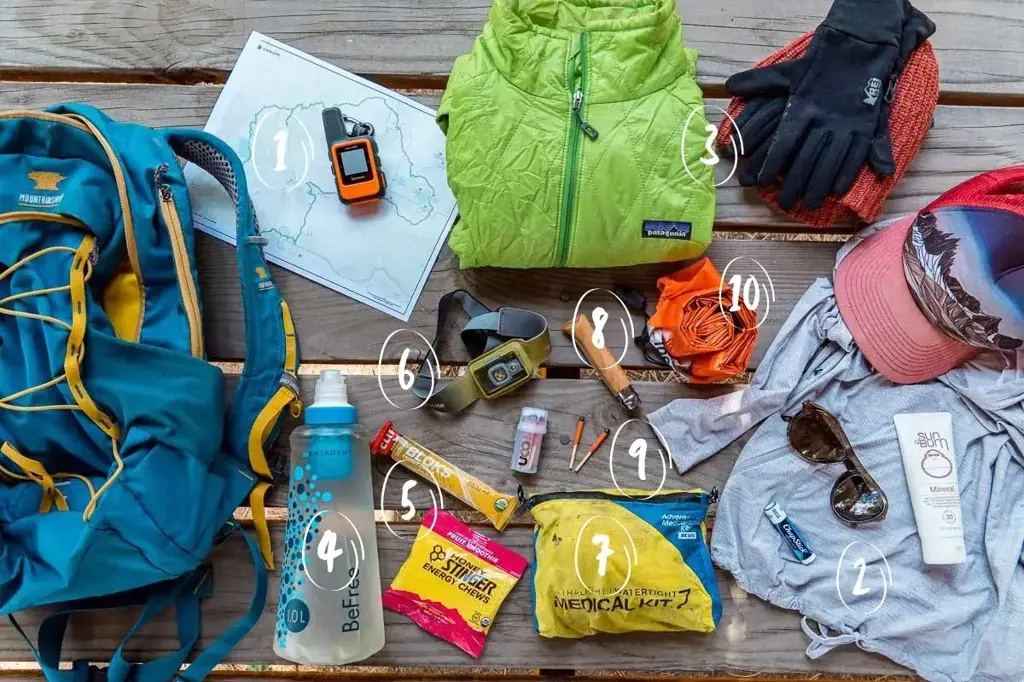
When preparing for a trekking trip, it is important to pack the essential items that will help you have a safe and enjoyable adventure. Whether you are embarking on a day hike or a multi-day expedition, there are a few key items that should always be included in your trekking gear.
Proper Footwear:
Investing in a good pair of trekking boots or shoes is crucial. Look for shoes that offer ankle support and have a sturdy outsole with good traction. It is also important to break in your footwear before your trip to avoid blisters and discomfort.
Clothing Layers:
Dress in layers to adapt to changing weather conditions. Start with a moisture-wicking base layer, such as synthetic or merino wool, which will keep you dry and comfortable. Add insulating layers like fleece or down jackets to provide warmth, and top it off with a waterproof and windproof outer shell to protect you from the elements.
Backpack:
A reliable backpack is essential for carrying your gear during the trek. Look for a backpack with adjustable straps and a hip belt for proper weight distribution. Opt for a size that can fit all your essentials while still being comfortable to carry for extended periods.
Navigation Tools:
Carry a map, compass, and a GPS device to navigate your way through the trekking trail. Familiarize yourself with the route beforehand to avoid getting lost. Additionally, it is wise to have a backup power source for your electronic navigation devices, such as spare batteries or a portable charger.
Hydration:
Stay hydrated by carrying a water bottle or a hydration bladder. The amount of water you will need depends on the duration and intensity of your trek, as well as the climate. It is recommended to carry a water purification method, such as water purification tablets or a water filter, in case you run out of clean drinking water.
Food and Snacks:
Pack lightweight, nutritious food and snacks that will keep you energized during the trek. Consider options like energy bars, trail mix, dehydrated meals, and fruits that can withstand the journey. It is important to bring enough food to sustain you throughout the trek, as well as a little extra in case of any unforeseen circumstances.
First Aid Kit:
Accidents happen, so it is essential to carry a well-stocked first aid kit. Include items like bandages, adhesive tape, disinfectant, pain relievers, antihistamines, and any necessary prescription medications. It is also recommended to have a basic knowledge of first aid procedures.
Lighting:
Carry a headlamp or a flashlight with extra batteries. These are essential for navigating in low-light conditions or during night treks. It is important to test your lighting equipment before the trip to ensure they are in working order.
Personal Care Items:
Carry personal care items such as sunscreen, insect repellent, lip balm, and wet wipes. These items will help protect your skin from sunburn, bug bites, and keep you feeling clean and refreshed during the trek.
Shelter:
Depending on the duration of your trek, you may need to carry a lightweight tent, sleeping bag, and sleeping pad. These will provide you with a comfortable and safe place to rest during multi-day treks. Consider the weather conditions and insulation properties when selecting your shelter gear.
Remember, the key to a successful trekking trip is to pack efficiently and only carry what is necessary. Distribute the weight evenly in your backpack and always consider the weight of your gear when planning your trip. Adequate preparation and the right gear will ensure you have an enjoyable and safe trekking experience.
The Essential Items to Pack in Your Suitcase for a Stress-Free Trip
You may want to see also

How should I pack my backpack for a trekking trip to ensure maximum comfort and convenience?
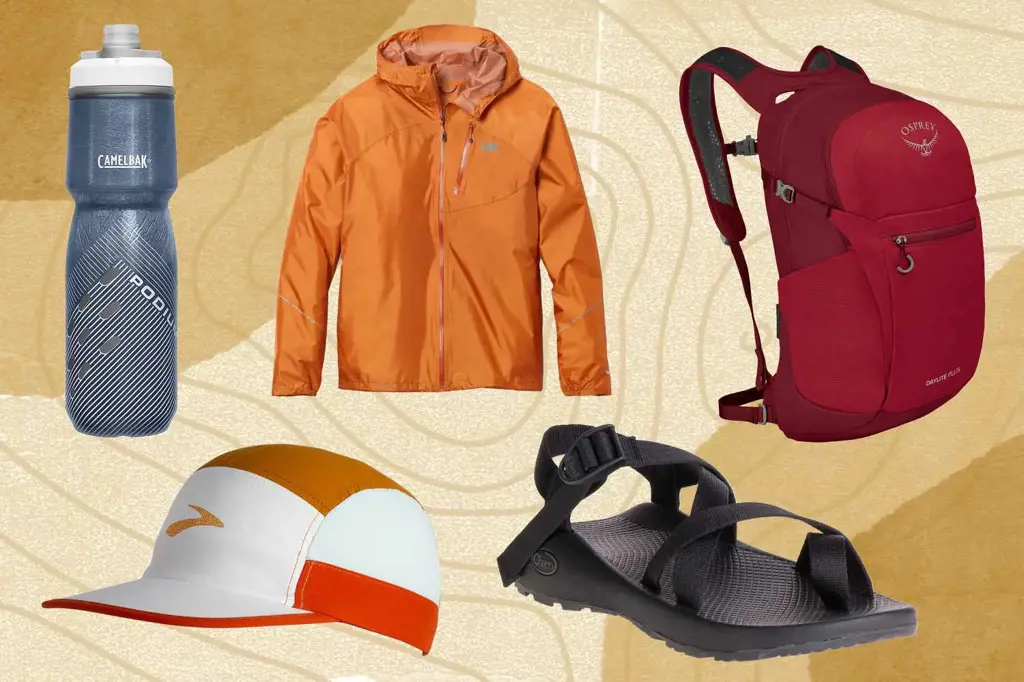
Trekking is an adventurous activity that allows you to explore the natural beauty of the great outdoors. Whether you are embarking on a short day hike or a multi-day trek, packing your backpack in the right way is essential to ensure maximum comfort and convenience throughout your journey. Here are some tips and steps to help you pack your backpack effectively for a trekking trip:
- Choose the right backpack: The first step in packing your backpack is to select the right size and type of backpack. Consider the duration and difficulty level of your trek, as well as the weather conditions. A backpack with a capacity of 30-50 liters is usually sufficient for a day hike, while overnight or multi-day treks may require a larger backpack with a capacity of 50-70 liters.
- Make a checklist: Before you start packing, make a checklist of essential items that you will need during your trek. This list may include clothing, toiletries, camping gear, food and water, navigation tools, and personal items. Having a checklist will help you stay organized and ensure that you don't forget anything important.
- Pack strategically: When packing your backpack, it is important to distribute the weight evenly to maintain balance and stability. Place heavy and bulky items at the bottom of your backpack, close to your back. This will help maintain your center of gravity and prevent strain on your shoulders and back. Lighter items can be placed on top or in side pockets for easy access.
- Use packing organizers: Packing organizers such as compression sacks, packing cubes, and dry bags can help maximize the space in your backpack and keep your belongings organized. Roll your clothes instead of folding them to save space, and use compression sacks to compress bulky items like sleeping bags or jackets.
- Prioritize essentials: When packing, prioritize essential items such as food, water, and emergency supplies. These items should be easily accessible, either in the top compartment of your backpack or in side pockets. Make sure to pack enough water to stay hydrated throughout your trek, as well as snacks or meals that provide sufficient energy.
- Consider the weather: Weather conditions can vary during a trek, so it is important to pack appropriate clothing and gear. Layering is key to staying comfortable in changing temperatures. Pack lightweight and moisture-wicking clothing that can be easily layered and removed as needed. Don't forget items such as rain gear, a hat, gloves, and sunglasses to protect yourself from sun, wind, and rain.
- Pack smart for comfort: To ensure maximum comfort during your trek, pay attention to the placement of items in your backpack. Place frequently used items such as a map, compass, sunscreen, or insect repellent in easily accessible pockets. Use padding or a backpack rain cover to protect your back and shoulders from discomfort caused by sharp objects or moisture.
- Test your pack: Before embarking on your trek, take a short walk or hike with your fully packed backpack to ensure that the weight is evenly distributed and that you are comfortable carrying it. Make any necessary adjustments or rearrangements to enhance comfort and convenience.
By following these tips and steps, you can pack your backpack effectively for a trekking trip and ensure maximum comfort and convenience throughout your adventure. Remember to pack light, prioritize essentials, and stay organized to make your trek a memorable and enjoyable experience.
What to Pack for Your Trip to Red Mountain Resort
You may want to see also

What kind of clothing and footwear is appropriate for a trekking trip?
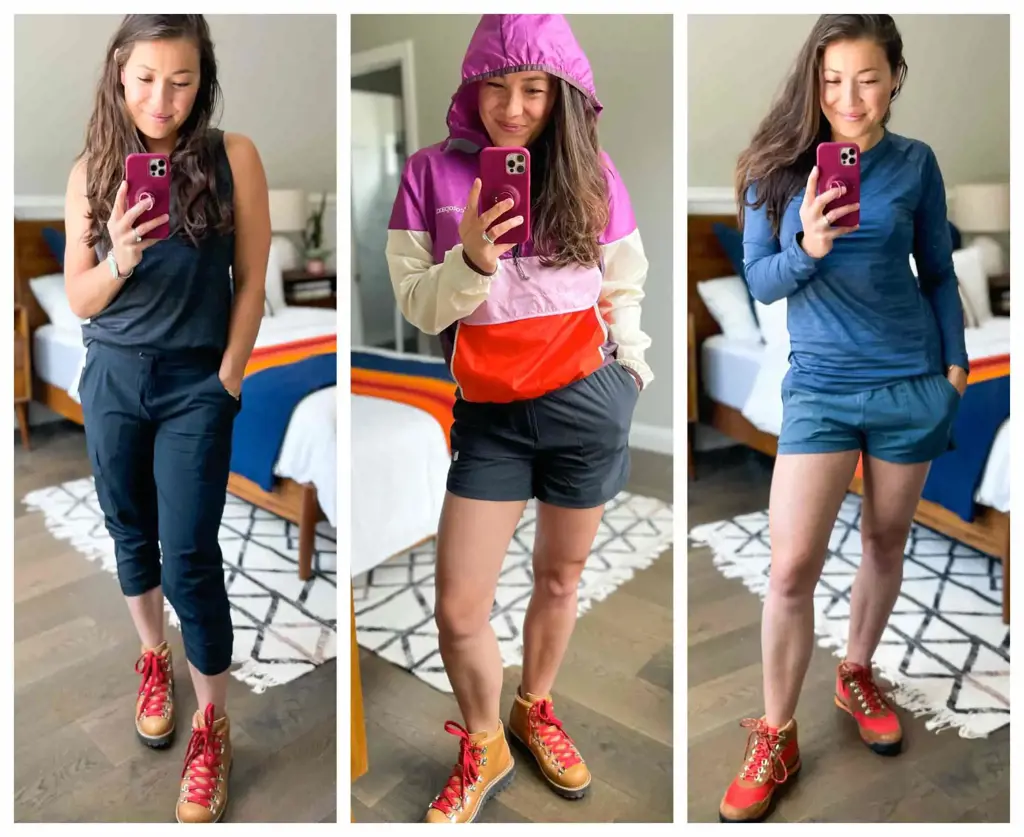
When embarking on a trekking trip, it is essential to dress appropriately to ensure comfort, safety, and optimal performance. The right clothing and footwear can make a significant difference in your overall experience. Here, we will discuss the appropriate clothing and footwear for a trekking trip, taking into account scientific principles, personal experience, step-by-step considerations, and real-life examples.
Layering System:
Scientifically, the layering system is crucial for trekking. It allows you to regulate your body temperature by adding or removing layers as needed. The layering system consists of three main layers: base layer, insulating layer, and outer layer. The base layer should be made of moisture-wicking fabric to keep you dry, while the insulating layer traps your body heat. The outer layer should be waterproof and breathable to protect you from the elements.
Clothing Materials:
In terms of clothing materials, synthetic fabrics like polyester and nylon are excellent choices for trekking. These materials are lightweight, quick-drying, and resistant to abrasion. Merino wool is another great option as it is moisture-wicking, odor-resistant, and offers natural insulation. Cotton should be avoided as it retains moisture and takes a long time to dry, which can lead to discomfort and even hypothermia in cold weather.
Footwear:
Trekking requires sturdy and supportive footwear to protect your feet and provide stability on challenging terrains. Hiking boots are the most common choice for treks. They should have a rugged outsole for traction, ankle support to prevent sprains, and a waterproof construction. It is essential to break in your hiking boots before the trip to avoid blisters and ensure a comfortable fit.
Socks:
Socks are often overlooked but play a vital role in keeping your feet comfortable during a trek. Synthetic or merino wool socks are recommended for their moisture-wicking properties and blister prevention. It is advisable to wear a thin liner sock underneath a thicker hiking sock for added cushioning and to minimize friction.
Accessories:
Accessories like hats, sunglasses, and gloves are essential for protecting yourself from the sun, wind, and cold. A wide-brimmed hat provides shade and safeguards your face and neck from sunburn. Polarized sunglasses protect your eyes from harmful UV rays and glare. Gloves, preferably made of moisture-wicking and insulating materials, help keep your hands warm in colder climates.
Real-life Example:
During a recent trek in the Himalayas, I followed the above guidelines for clothing and footwear. I wore a moisture-wicking base layer, a merino wool insulating layer, and a waterproof and breathable outer layer. My hiking boots provided excellent support and grip on the rocky terrain, while the combination of liner socks and thick hiking socks prevented any blisters. The accessories, including a hat, sunglasses, and gloves, kept me protected from the sun and cold temperatures.
In conclusion, when preparing for a trekking trip, it is crucial to choose appropriate clothing and footwear. Scientific principles, personal experience, step-by-step considerations, and real-life examples emphasize the importance of layering, choosing the right materials, wearing supportive footwear, and using essential accessories. By following these guidelines, you can enhance your trekking experience and enjoy the journey to the fullest.
Essential Items to Pack for a Cruise Line Job
You may want to see also

What type of gear or equipment should I bring for a trekking trip?
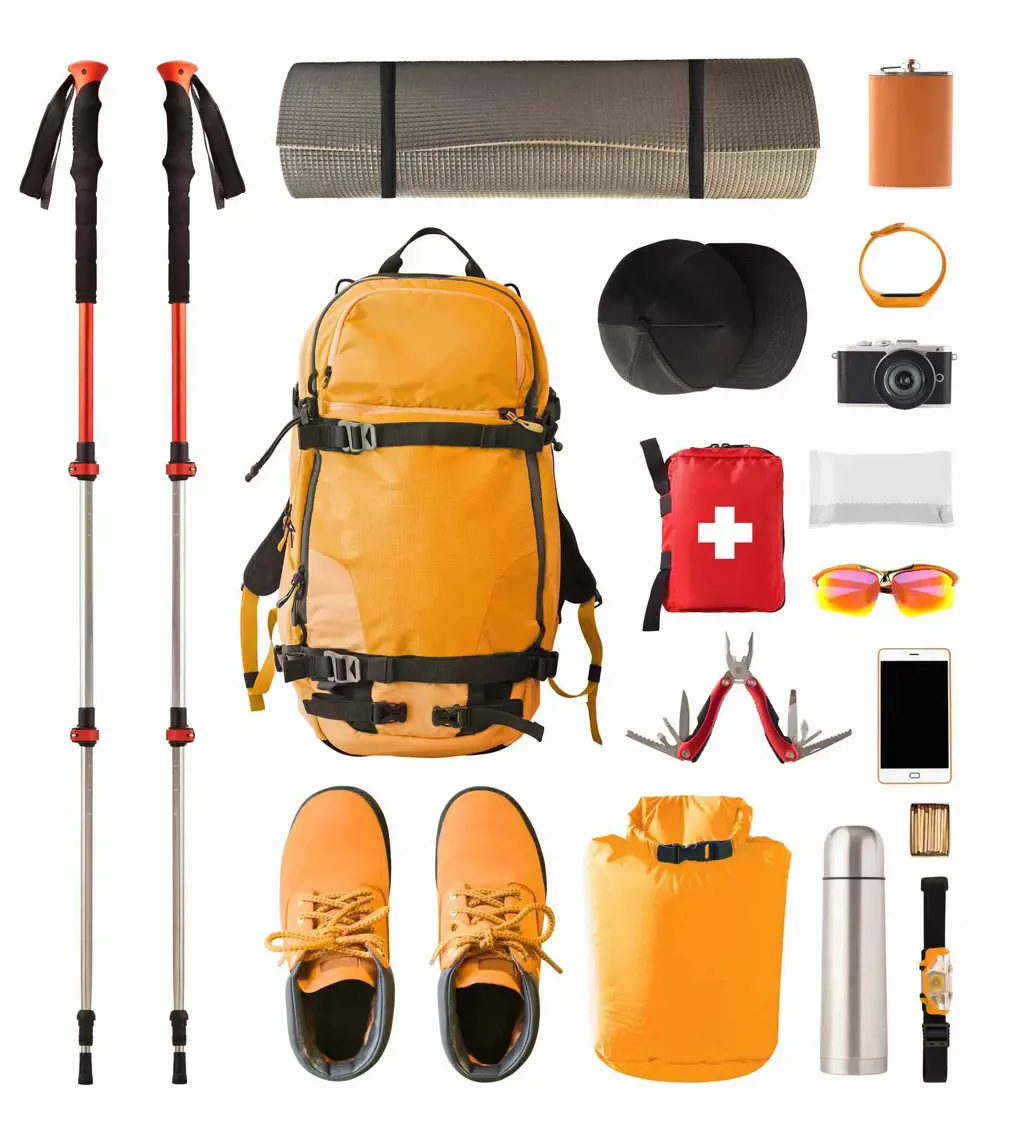
Trekking is an exciting and adventurous activity that requires proper preparation and packing of essential gear and equipment. Whether you are embarking on a day hike or a multi-day trek, having the right gear can make your journey much more enjoyable and safe. In this article, we will discuss the essential gear and equipment you should bring for a trekking trip.
- Backpack: A good quality backpack is essential for trekkers. Look for one with a comfortable and adjustable suspension system, hip belt, and shoulder straps. The size of the backpack depends on the duration of your trek and the amount of gear you need to carry. It should have enough capacity to accommodate all your essentials, including clothing, food, water, and other equipment.
- Clothing: Dressing in layers is crucial while trekking to adapt to changing weather conditions. Bring a moisture-wicking base layer that keeps you dry and comfortable. A mid-layer or fleece jacket provides insulation, while a waterproof and breathable outer layer protects you from rain and wind. Don't forget to pack thermal underwear, hiking socks, a hat, gloves, and a sturdy pair of trekking boots.
- Navigation tools: To avoid getting lost while trekking, bring a map, compass, and/or GPS device. Familiarize yourself with their use before the trip. Additionally, it is advisable to have a reliable whistle, which can be used as an emergency signaling tool.
- Shelter: Depending on the type and duration of your trek, you may need to bring a tent, sleeping bag, and a sleeping pad. These are essential for overnight treks or multi-day hikes where you will be camping. Invest in a lightweight and compact tent that offers protection from the elements. The sleeping bag should be suitable for the temperature range you expect during the trek.
- Cooking equipment: If you plan to cook your meals during the trek, pack a lightweight stove, fuel, a pot, and utensils. Opt for camping cookware that is durable, compact, and lightweight. Don't forget to bring a water purifier or water treatment tablets to ensure safe drinking water during the trek.
- Hydration and nutrition: Staying hydrated is crucial while trekking. Carry a water bottle or hydration bladder to ensure you have a sufficient supply of water. Pack high-energy snacks such as trail mix, energy bars, and dried fruits to keep yourself fueled throughout the trek.
- Safety equipment: It's essential to prioritize safety while trekking. Pack a first aid kit with basic medical supplies for treating minor injuries and illnesses. Include items like bandages, disinfectant, pain relievers, and any personal medications you may need. Additionally, bring a headlamp or flashlight, extra batteries, a multi-tool, and a whistle for emergencies.
- Personal items: Don't forget to pack essential personal items such as sunscreen, sunglasses, insect repellent, toiletries, a towel, and a camera to capture the stunning views.
Remember to research the specific requirements of your trek and pack accordingly. Check the weather forecast for the area and choose your gear accordingly. It's also important to break in new boots or hiking shoes before your trek to avoid blisters or discomfort. By packing the right gear and equipment, you can ensure a safe and enjoyable trekking experience.
Essential Items to Pack for a Memorable Beach Holiday
You may want to see also

Are there any specific items or tips you recommend for trekking in different climates or terrains?
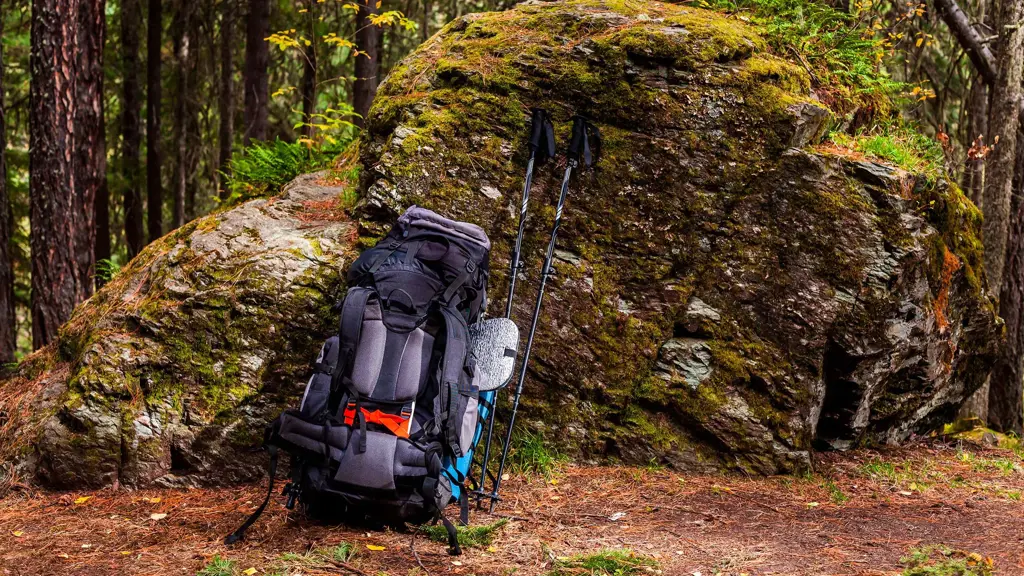
Trekking is a thrilling outdoor activity that allows you to explore nature in its purest form. Whether you're planning to trek in the snowy mountains, dense forests, or arid deserts, it's important to be well-prepared for the challenges that come with different climates and terrains. Here are some specific items and tips that will make your trekking experience enjoyable, safe, and rewarding.
Layered Clothing:
One of the most important aspects of trekking in different climates is wearing layered clothing. Layering allows you to adapt to changing weather conditions. Start with a moisture-wicking base layer that keeps you dry by wicking away sweat. Add an insulating layer made of fleece or down to provide warmth. Finally, wear a waterproof and breathable outer shell to protect you from rain, wind, and snow. This layering system allows you to easily add or remove clothes as the temperature fluctuates.
Trekking Boots:
Investing in a good pair of trekking boots is crucial for a comfortable and safe trekking experience. Different terrains require different types of boots, so choose ones that are suitable for the terrain you'll be trekking on. Look for boots with ankle support, a sturdy sole with good traction, and waterproof features if you'll be trekking in wet or snowy conditions.
Trekking Poles:
Trekking poles are immensely helpful in providing stability and support, especially when trekking on uneven or slippery terrain. They help distribute your weight, reduce the strain on your joints, and provide additional balance. Look for lightweight and adjustable trekking poles that can be easily packed and adjusted to your desired height.
Hydration System:
Proper hydration is crucial during trekking, regardless of the climate. Invest in a hydration system such as a hydration bladder or water bottles designed for outdoor activities. These systems allow you to conveniently carry and access water throughout your trek. It's also important to treat water obtained from natural sources using water purification tablets or a filtration system to ensure its safety.
Navigation Tools:
When trekking in unfamiliar terrains, navigation tools are essential for staying on the right path. Carry a map, compass, or GPS device to help you navigate your way. Familiarize yourself with the use of these tools before your trek to avoid getting lost. It's also beneficial to learn basic navigation skills such as reading topographic maps and understanding landmarks.
First Aid Kit:
Accidents and injuries can happen during trekking, so it's crucial to carry a well-stocked first aid kit. Include items such as bandages, antiseptic wipes, pain relievers, blister treatment, insect repellent, and any essential medications. Familiarize yourself with basic first aid techniques before your trek, as it may take time to reach professional medical help in remote areas.
Proper Nutrition:
Trekking requires a significant amount of energy, so it's important to fuel your body with proper nutrition. Pack lightweight and high-energy snacks such as trail mix, energy bars, and dried fruits. Carry a portable stove or cooking utensils if your trek will last for multiple days. Ensure you have a balanced diet that includes carbohydrates, proteins, and healthy fats to keep your energy levels up.
Adequate Sleep System:
A comfortable sleep system is essential, especially during overnight or multi-day treks. Invest in a lightweight and compact sleeping bag that is suitable for the climate you'll be trekking in. Additionally, consider carrying a sleeping pad or insulating mat to provide insulation and cushioning from the cold or hard ground.
Proper Waste Management:
Responsible trekking involves leaving no trace behind. Carry a small trash bag to collect your waste and dispose of it properly when you reach a designated waste disposal area. Avoid leaving any non-biodegradable waste behind and respect the natural environment you're trekking in.
Physical Conditioning:
Lastly, prepare yourself physically before undertaking challenging treks. Cardiovascular endurance, strength, and flexibility are important for trekking in different climates and terrains. Engage in regular exercise and specific training activities that mimic the demands of trekking, such as hiking, running, and strength training exercises for the lower body.
Trekking in different climates and terrains can be an incredible adventure, but it requires careful preparation and the right gear. By following these tips and ensuring you have the necessary items, you'll be well-equipped to tackle any trekking challenge that comes your way. Remember to always prioritize safety, respect the environment, and enjoy the journey!
Essential Packing Tips for Gorilla Trekking Adventures
You may want to see also
Frequently asked questions
When packing for a trekking trip, it's important to have clothing that is comfortable, durable, and suitable for various weather conditions. Some essential items to pack include a sturdy pair of hiking boots, moisture-wicking socks, lightweight and quick-drying pants, a breathable base layer, a warm mid-layer such as a fleece or down jacket, a waterproof and windproof outer layer, a hat to protect against the sun or cold, and gloves for extra warmth.
In addition to clothing, there are several essential equipment items to pack for a trekking trip. These include a backpack to carry your belongings, a sleeping bag and sleeping pad for overnight stays, a headlamp or flashlight for navigating in low light conditions, a compass or GPS device for navigation, a first aid kit for emergencies, a water bottle or hydration system to stay hydrated, a multi-purpose tool or knife, a lighter or matches for starting fires, and any specific gear required for the terrain or activities you'll be engaging in, such as crampons or an ice axe for snow or glacier treks.
It's important to pack enough food and water to sustain yourself on a trekking trip, as you may not always have access to clean water or food sources along the way. Pack lightweight, non-perishable food items such as energy bars, nuts, dried fruits, and dehydrated meals that can be easily prepared with hot water. Depending on the length of your trek and availability of water sources, plan to carry enough water or invest in a water purification system to safely drink water from natural sources, such as streams or lakes.
In addition to clothing, equipment, and food/water, there are a few other essential items to pack for a trekking trip. These include a map and compass or GPS device for navigation, a lightweight and compact tent for camping, a sleeping bag liner for added warmth and cleanliness, a portable stove and cookware for cooking meals, a lightweight camping chair or mat for resting, a camera or smartphone for capturing memories, extra batteries or a power bank for charging devices, sunscreen and insect repellent, and a small towel or wipes for personal hygiene.







